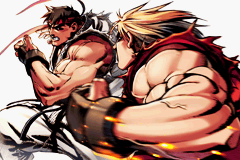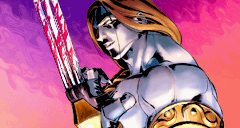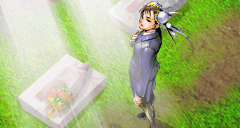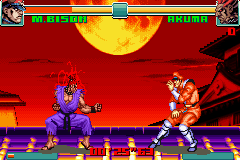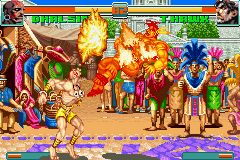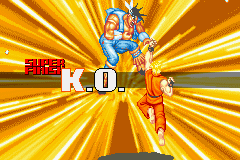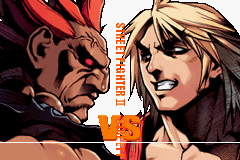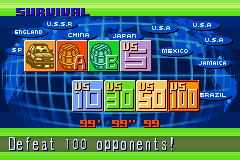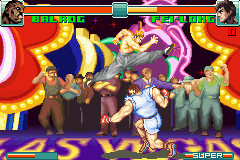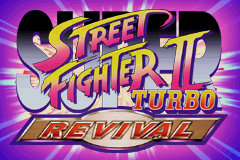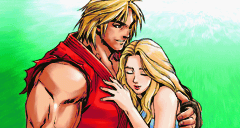|

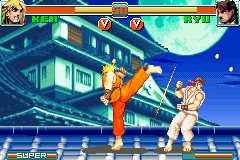
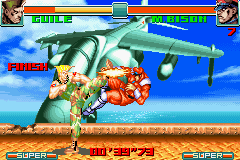
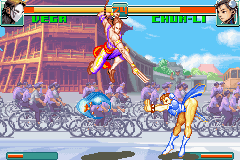
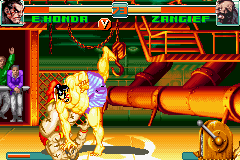
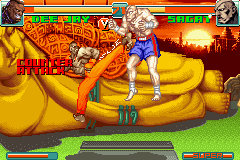
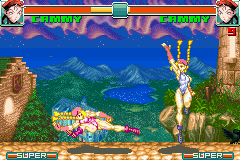

|
The first, most noticeable aspect of the game is the four-button
layout we've seen in several of Capcom's newer fighters like Capcom VS
SNK, Project Justice, and Power Stone 2. The game handles the classic
three punches and three kicks control scheme by requiring the player to
tap Jab for a Jab Punch, or to hold Jab for a Strong Punch. At first it
may seem a bit strange to play with, but in many ways it is similar to
the way Capcom VS SNK required a player to hold a certain direction in
order to perform one of two attacks assigned to a button. After playing
the game a lot, it becomes second nature almost, with no real control
surprises when trying to pull off moves or combos. Seeing as how Capcom's
newest creations have taken on the control scheme of four buttons, it
came as no surprise to me when Capcom made the control decision of this
game.
One of the other most noticeable aspects of the game is
the completely new character art Capcom put into this game. The Player
Select and victory screen art in SSFIITR is nicely done, with completely
fresh artwork for every character in the game, including Akuma. The illustration
style in this game is a bit different from the style in previous SF games,
with more darkly detailed, shaded portraits. The new illustrations work
well with the new look of the game, and look great with nice resolution
and are large, with full-screen portraits for the VS and victory screens.
Now gone is the intro with Chun-Li, Cammy, Ryu, and Akuma from SSFIIT:
Capcom put in nicely detailed slides of Ryu and Ken battling, followed
by a randomly chosen character illustrations covered partially by an "X".
The new intro doesn't seem like much when talked
of, but just like the rest of the game, it has to be seen to know how
cool it really is.
Aside from the great new set of character illustrations
and intro illustrations, SSFIITR also delivers when it comes to character
endings; Capcom has packaged in completely new ending illustrations that
are more detailed and unique than those in SSFIIT. Though SSFIITR only
has one ending screen unique to each character opposed to the three or
four in SSFIIT, the illustrations are amazing and still manage to create
the same amount of character depth the endings in SFIIT did. Of the most
impressive new illustrations are the re-worked versions of Guile and Cammy's
old ending screens, which now feature completely re-drawn characters and
backgrounds that were in some of the the SSFIIT ending pictures; again,
these are completely re-illustrated, and none are recycled from any of
the previous SF games.
Of the new ending screens, I'd have to say that the most
dramatic ending screen is Vega's; without a mask, Vega has broken claws
with blood dripping from them, a partially shadowed face, and beautifully-textured
hair. As far as character illustration presentation, this game has a unique
set of character illustrations that, to me, don't hold a stick (or any
other long, skinny object) to those of SFA3SD, but they still deliver
quality nonetheless.
Capcom also went out of their way to include new backgrounds
to go with the great character illustrations of SSFIITR. SSFIITR features
new stages for Ken, Guile, Chun-Li, Balrog, Zangief, M. Bison, and Ryu.
As for the rest of the stages, they are of the originals found in SSFIIT,
with the same hues and animations.
|

